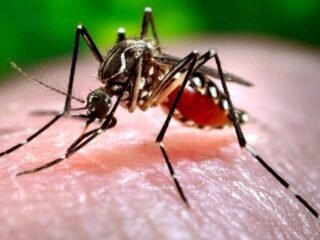According to a new development by scientists, it has been found that a protein-based coronavirus vaccine candidate mimics the shape of the virus to activate robust antibody response in animals. The study is published in the journal ACS Central Science in which the researchers saw immunised mice with nanoparticles that imitate SARS-CoV-2, the virus that causes coronavirus, by displaying the multiple copies of the receptor-binding domain (RBD) antigen.
A portion of the SARS-CoV-2 spike protein which the virus uses to enter and infect human cells, most protein-based vaccines train the immune system to recognise the RBD. The spike protein fixes to the ACE-2 receptor on host cell surfaces, which acts as a gateway for the entry of the virus.
However, both antibody and T cell responses are produced by all vaccines, both of which are thought to be important for longer-lasting immunity. The researchers from the University of Chicago, US, had previously developed a vaccine delivery tool called polymersomes — self-assembling, spherical nanoparticles that can encapsulate antigens and adjuvants — and then release them inside immune cells.
The researchers further stated that Adjuvents which are the helper molecules that boost the immune response and polymersomes activate robust T cell immunity. However, the team of researchers wondered that if they could further improve the antibody response by engineering the nanoparticles to mimic viruses by displaying multiple copies of the RBD on their surfaces.
Polymersomes that were as same in size to SARS-CoV-2 was made by the researchers and the team also decorated them with many RBDs.
After cumulating them with the nanoparticles in lab, they injected them into mice, along with separate polymersomes containing an adjuvant that too in two doses that were three weeks apart.
For comparing both the studies, they vaccinated another group of mice with polymersomes that summarized the RBD, along with the nanoparticles containing the adjunct. Although both groups of mice formed high levels of RBD-specific antibodies but only the surface-decorated polymersomes generated neutralising antibodies that prohibited SARS-CoV-2 infection in cells. Hence the researchers said, both the surface-decorated and encapsulated RBDs triggered robust T cell responses.
Although for the safety and efficacy in humans, the new vaccine still needs to be tested. They further stated that it could have advantages over mRNA vaccines with regard to widespread distribution in resource-limited areas. That is because the surface-decorated polymersomes are stable and active for at least six months with refrigeration, according to the researchers.
In contrast, mRNA vaccines require subzero temperature storage, they added.







